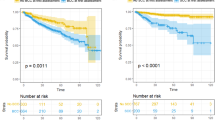Background and Objective: To determine the incidence of new skin cancer formation in people who have had a nonmelanoma skin cancer (NMSC) removed. Methods: A prospective study of Australian outpatients with histologically confirmed nonmelanoma skin cancer (NMSC). Results: Four hundred eighty-one patients were entered in the study and 300 were followed for at least 10 years. Another skin cancer developed in 67.8% and multiple skin cancers (three or more) in 51.8%. A logistical regression analysis found that the main risk factors for new skin cancer formation were male sex and if the patient had multiple skin cancers. A squamous cell carcinoma (SCC) developed in 36% during the study and a melanoma in 4.7% of men and 2.1% of women. Men who had a NMSC were 8 times more likely than the general population to develop a melanoma while women with NMSC were 4 times more likely. Three patients died of metastatic SCC and one of metastatic melanoma during the followup period. A multivariate analysis showed that multiple skin cancer formation was the main risk factor for SCC or melanoma formation. Conclusion: Patients with NMSC require careful followup as they have an increased risk of new cancer formation. Those with multiple skin cancer merit particularly careful followup as all develop another NMSC within 10 years and have a significantly increased risk of developing SCC or melanoma. Antécédents et objectif: Déterminer l'incidence d'une nouvelle formation de cancer de la peau chez une population ayant eu un cancer de la peau avec mélanome bénin. Méthode: Étude prospective de patients australiens non hospitalisés ayant un cancer de la peau avec mélanome bénin à diagnostic histologique. Résultats: 481 patients ont participé à l'etude. Un suivi d'au moins 10 ans a été effectué sur 300 d'entre eux. 67,8% ont développé un autre cancer de la peau et 51,8% des cancers de la peau multiples (trois ou plus). Une analyse de régression logistique a démontré que les principaux sujets à risque de développer un nouveau cancer de la peau sont les hommes et les personnes ayant des cancers de la peau multiples. Durant l'étude, 36% des patients ont développé un carcinome spino-cellulaire, et 4,7% des hommes et 2,1% des femmes ont développé un mélanome. Les hommes ayant eu un cancer de la peau avec mélanome bénin couraient un risque 8 fois plus grand que la population générale de développer un mélanome alors que les femmes ayant eu un cancer de la peau avec mélanome bénin couraient un risque 4 fois plus grand que la population générale. Durant la période de suivi, trois patients sont décédés des suites d'un carcinome métastatique et un à la suite d'un mélanome métastatique. Une analyse multivariable a démontré que la présence de cancers de la peau multiples était le principal facteur de risque de formation de carcinome spino-cellulaire ou de mélanome. Conclusion: Les patients ayant un cancer de la peau avec mélanome bénin doivent être suivis de près, car ils sont à risque élevé de développer de nouveaux cancers. Les personnes qui présentent des cancers de la peau multiples doivent bénéficier d'un suivi sérieux, car elles développent toutes un autre cancer de la peau avec mélanome bénin au cours des dix années suivant le premier et présentent des risques élevés de développer un carcinome spino-cellulaire ou un mélanome.
Similar content being viewed by others
Author information
Authors and Affiliations
About this article
Cite this article
Czarnecki, D., Sutton, T., Czarnecki, C. et al. A 10-Year Prospective Study of Patients with Skin Cancer . JCMS 6, 427–429 (2002). https://doi.org/10.1007/s10227-001-0126-6
Issue Date:
DOI: https://doi.org/10.1007/s10227-001-0126-6




